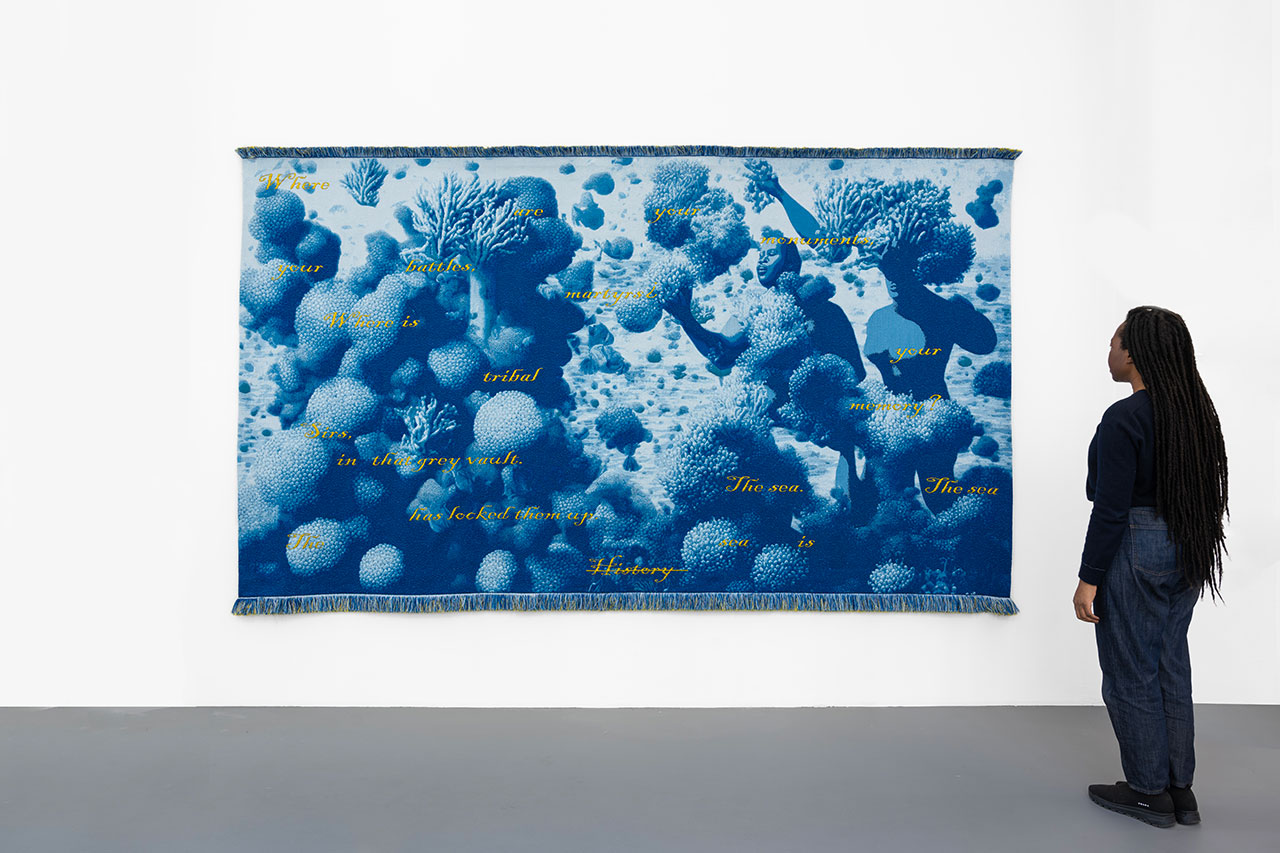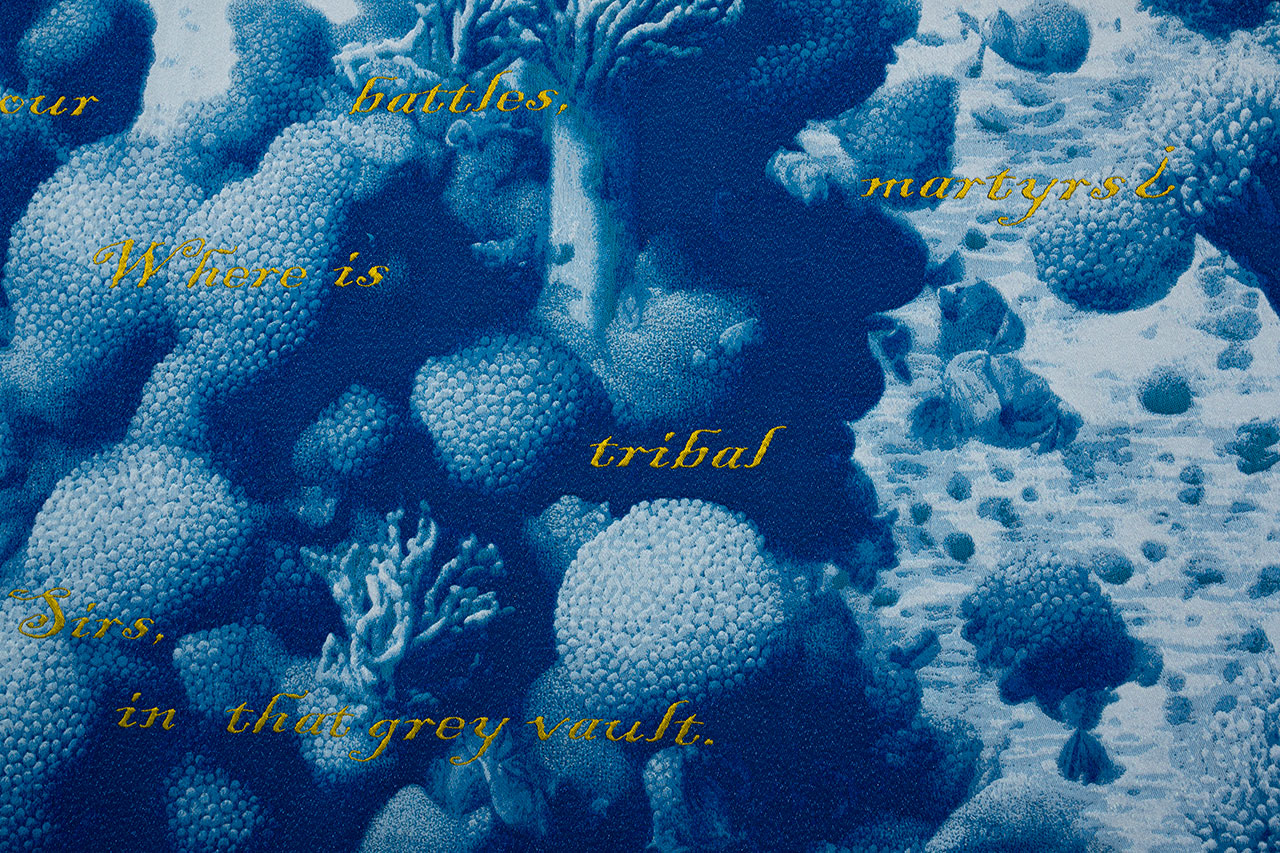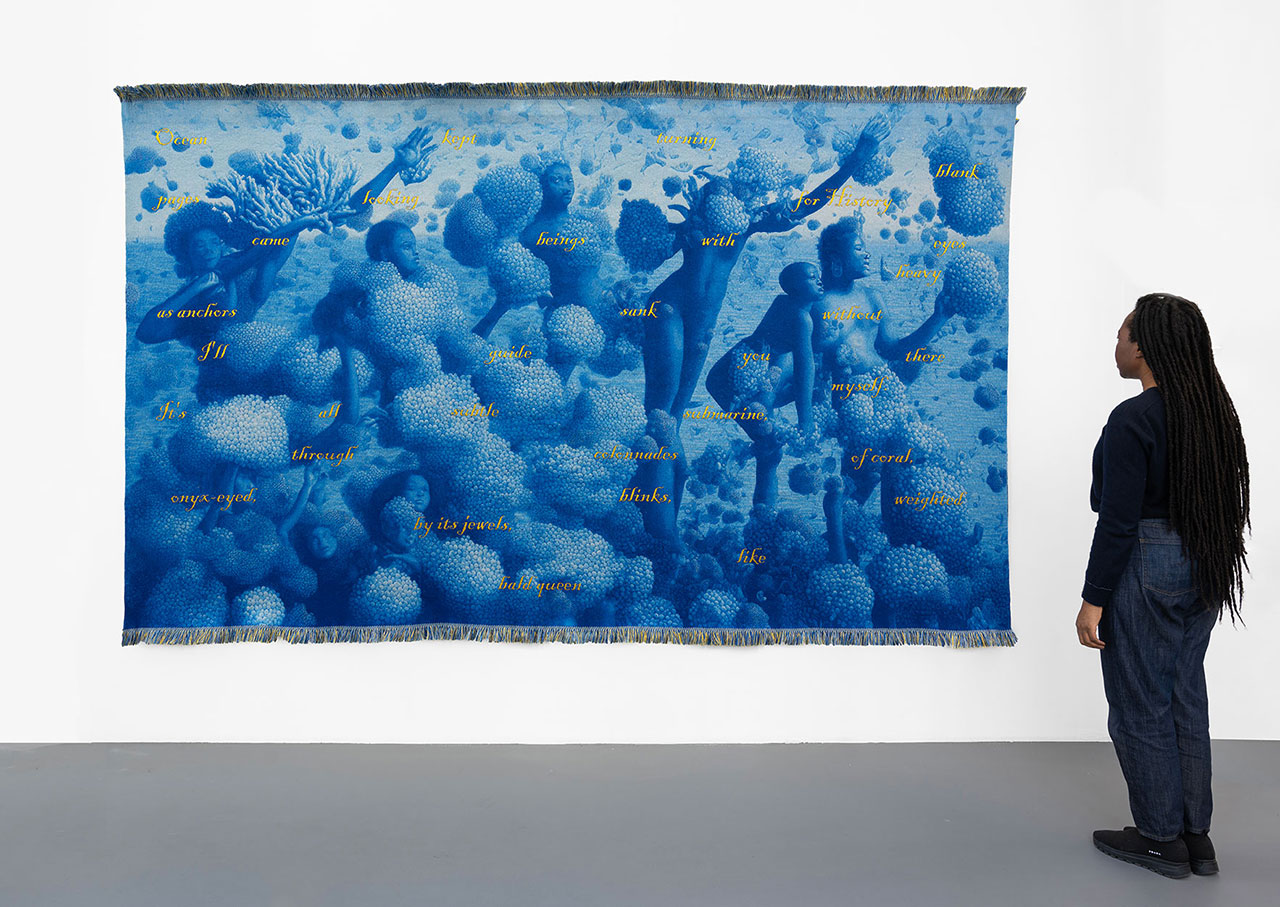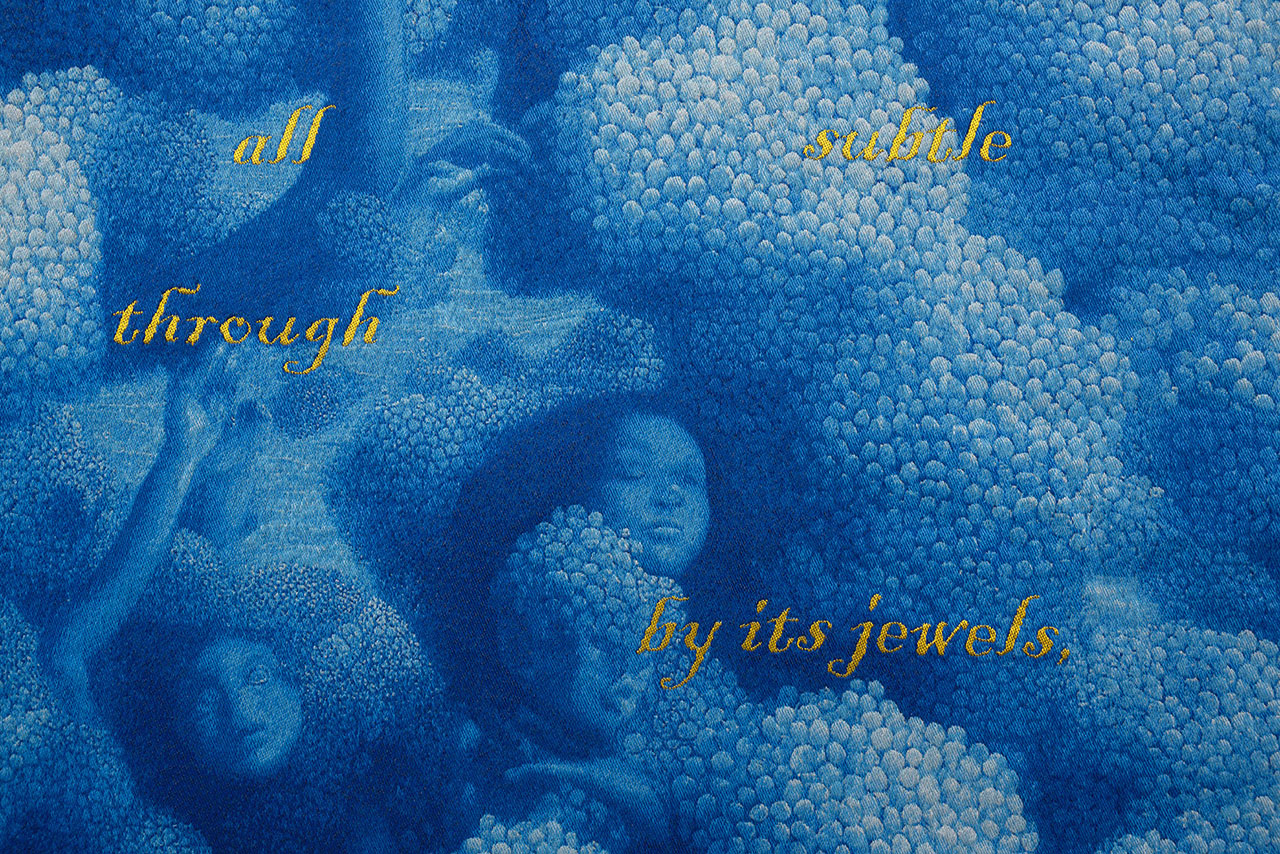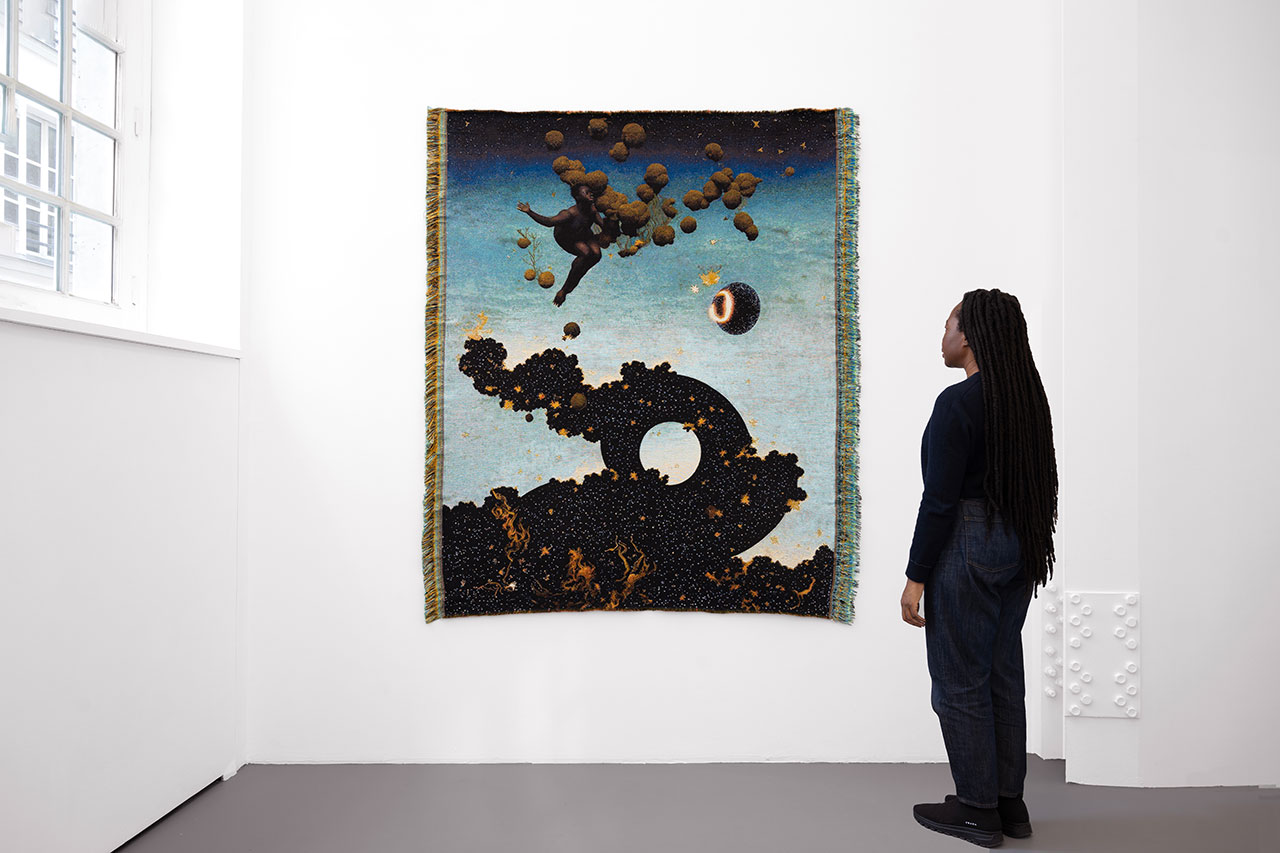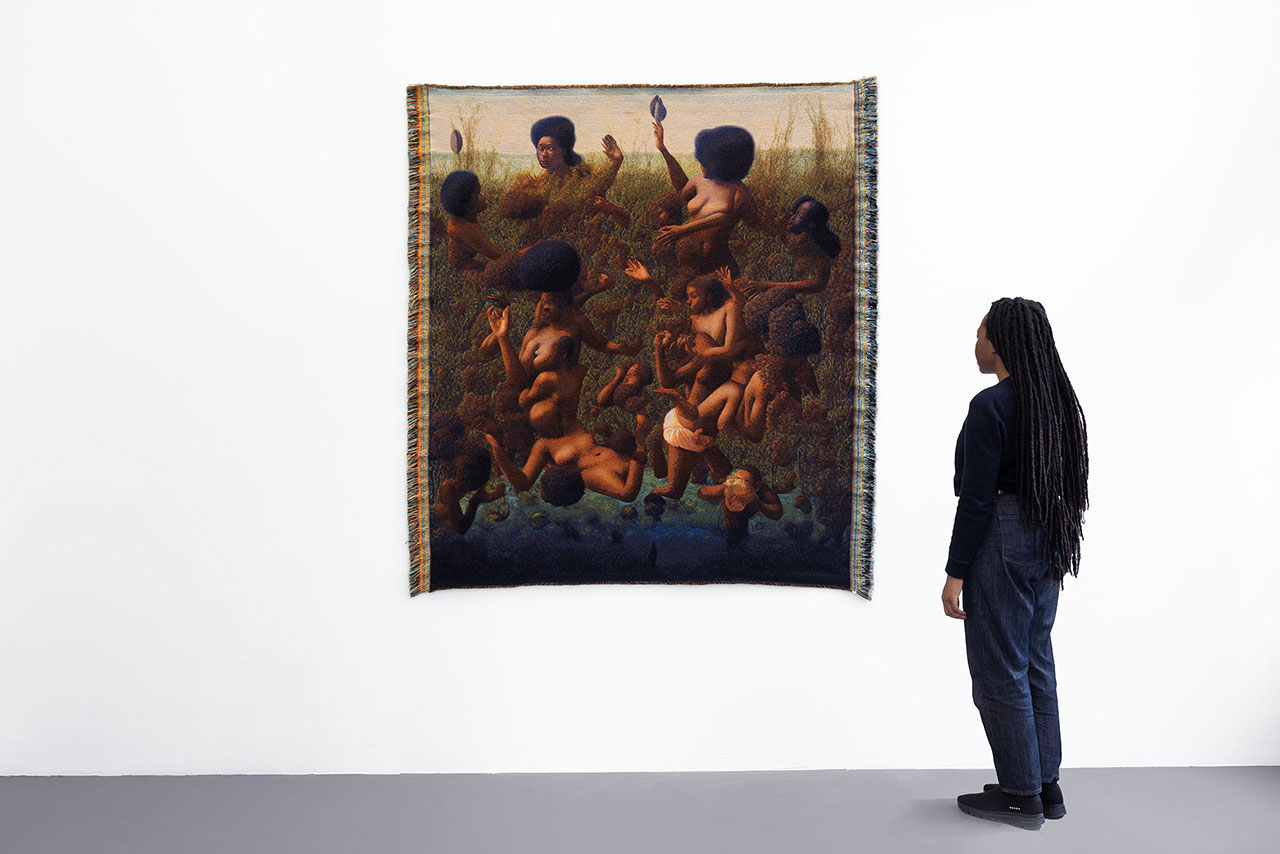“The Sea is History (After Derek Walcott)”
Solo Exhibition, GALERIE MITTERRAND,
Curated by Olivia Anani
March 28 – May 16, 2024, 79 rue du Temple, Paris.

Marc Johnson, “Sea Change/Mother of Pearls,” 210 x 350 cm, cotton, merino wool, polyester woven together, 2023, Courtesy of Studio Marc Johnson, Galerie Mitterrand, photo by Axel Fried.
Where are your monuments, your battles, martyrs?
Where is your tribal memory? Sirs,
in that grey vault. The sea. The sea
has locked them up. The sea is History.
Derek Walcott
Gallery Mitterrand is pleased to present from March 28th to May 16th, 2024, a solo exhibition devoted to the work of the French/Beninese artist Marc Johnson. Following several award-winning films and years of research, Marc Johnson unveils for the first time a series of textile works exploring ideas of an aquatic, post-human society. Echoing the myth of Drexciya, the Detroit-born myth of a Black Atlantis, as well as the reflections of figures such as Donna Haraway, Marc Johnson invites us to a reading of Derek Walcott’s poem The Sea is History, first published in 1979. Walcott’s poem is known for the author’s singular ability to mobilize the rich references of the biblical narrative to reframe the story of the Transatlantic slave trade. By claiming the very image of a chosen people, struck by tragedy, cast away, and yet essential like a cornerstone, Walcott sought to underline their profound contributions to the construction of contemporary society, anchoring firmly the descendants of slaves into the larger canon of Western societies are built on, from politics to religion, economy to languages and food. And yet, simultaneously, like a seer, the poet aimed to free them from this restrictive frame by opening his text towards the aquatic underworld of possibilities. Already a few years before the publication of Walcott’s poem, Sun Ra, another seer of an artist, had indeed claimed that “It’s already after the end of the world”. Just like Walcott, Sun Ra invoked ancient times and mythical narratives, especially those of Egypt, to conjure a past lost in the Atlantic passage, and call to manifest a world of future possibilities born from the process of loss. These three artists, the musician, the poet, and the visual artist, each bring us from their respective vantage points to the question: “What lies thus, after the end of the world?”
and in the salt chuckle of rocks
with their sea pools, there was the sound
like a rumour without any echo
of History, really beginning.

